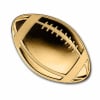Welcome to the Hardcore Husky Forums. Folks who are well-known in Cyberland and not that dumb.
OFFICIAL ANNOUNCEMENT

DerekJohnson
Administrator, Swaye's Wigwam Posts: 70,379 
I am tired of people using the word "metrics".
Do it again and you're gone
Do it again and you're gone
Comments
-
Fuck that. I'll say metrics all I want.
If you say the words advanced and metrics next to each other though you will be gone.
Also, it was nice knowing you guys. -
There won't be a warning, you'll just be gone
-
Have you been getting a lot of complaints in private?
-
Try answering my phone for a day.
-
Are you at a bar?
-
Are there blondes?MikeDamone said:Are you at a bar?
-
Some "metrics" should be exempt.
Judges?
-
We should have gone to the metric system in 1973. Or not. But pick one. Now we have this hybrid piece of shit.
-
In the words of a 14-year old CheersWestDawg: Holy Crapoli!
-
Metrics superiority guy shit himself and left. You didn't even have to ban him, DJ.



